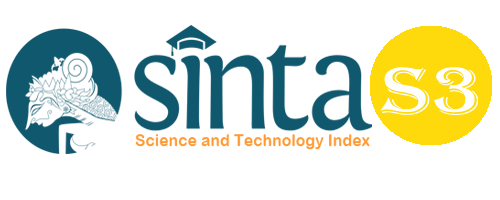The Influence of Work Motivation and Leadership Style on Organizational Performance in the VUCA Era
Abstract
In facing this VUCA era, organizations take into account that their Human Resources must be able to face the challenges of VUCA, one of which is mastering the skills needed to build and develop an organization in this VUCA era. The purpose of this study was to examine the effect of work motivation and leadership style on organizational performance in the VUCA era. The data collection technique uses a questionnaire with as many as 400 MSME leaders spread across various cities/regencies in West Java Province, namely Bogor Regency, Bandung Regency, Bandung City, Sukabumi Regency, Garut Regency, Cirebon Regency, Cianjur Regency, Karawang Regency, and Bekasi Regency. .. This type of research is quantitative with data analysis using Structural Equation Modeling(SEM). Based on the results of the analysis, the equation model Y = 0.88X1 + 0.26X2. The test results show that there is an influence of work motivation and leadership style on organizational performance in the VUCA era. This means the increased motivation and leadership style, the better the organizational performance significantly. Furthermore, when viewed from the determinant coefficient of 0.65, this coefficient shows that work motivation and leadership style variables contribute 65%, and the other 35% is explained by other factors outside of this research variable.
Keywords
Full Text:
PDFReferences
Arif, S. (2019). Influence of Leadership, Organizational Culture, Work Motivation, and Job Satisfaction of Performance Principles of Senior High School in Medan City. Budapest International Research and Critics Institute-Journal (BIRCI-Journal). P. 239-254
Ardana, I Komang, Ni Wayan Mujiati, and I Wayan Mudiartha Utama. (2011). Human Resource Management. Denpasar: Graha Ilmu
Astuti, Widya. (2008). The Effect of Leadership Behavior on the Performance of Pekanbaru City Planning Service Employees. Journal of State Administration, 8(2): h:73-82.
Guritno, B., and Waridin. (2005). the Influence of Employees' Perceptions on Leadership Behavior, Job Satisfaction and Motivation on Performance. Indonesian Business Research Journal, 1(1), p. 63-74.
Hasibuan, M. (2004). Human Resource Management. Earth Literacy, Jakarta.
Hasibuan, M. (2004). Human Resource Management. Jakarta: Earth Literacy
Hersey. (2004). Key to Success Situational Leaders. Jakarta: Delaprasata
Hooper et al. (2008). Structural Equation Modeling: Guidelines for Determining Model Fit. The Electronic Journal of Business Research, 6(1), p. 53 – 60.
Istiqlal, CH (2009). Islamic Banking Performance Assessment with the Balanced Scorecard Method. Journal of Islamic Economics, 3(2).
Purba, K., Sudibjo, K. (2020). The Effects Analysis of Transformational Leadership, Work Motivation and Compensation on Employee Performance in PT. Sago Nauli. Budapest International Research and Critics Institute-Journal (BIRCI-Journal) Volume 3, No 3, Page: 1606-1617
Siagian P. Sondang. (2002). Tips to Increase Work Productivity. Jakarta: Rineka Cipta
Suranta, S. (2002). The Impact of Employee Motivation on the Relationship between Leadership Style and Employee Performance in Business Companies. Empiric, 15(2), p. 116-136.
Suranta, Sri. (2002). the impact of employee motivation on the relationship between leadership style and employee performance in business companies. Empirical
Tampi, BJ (2014). The Influence of Leadership Style and Motivation on Employee Performance at PT. Bank Negara Indonesia, Tbk (Regional Sales Manado). Journal “Acta Diurna”, III(4), p. 1-20.
Tangkilisan, HNS (2005). Public Management. Jakarta: PT. Grasindo.
Tjiptono, F. (2006). Service Management Services. Yogyakarta: Publisher Andi.
Tsoukatos and Rand, G. (2006). Path Analysis of Perceived Service Quality, Satisfaction and Loyalty in Greek Insurance. Managing Service Quality, 16(5), p. 501-519.
Umar, H. (1999). HR Research in Organizations. Yogyakarta: PT. Main library grammar.
DOI: https://doi.org/10.33258/birci.v5i1.3788
Article Metrics
Abstract view : 214 timesPDF - 73 times
Refbacks
- There are currently no refbacks.

This work is licensed under a Creative Commons Attribution-ShareAlike 4.0 International License.

This work is licensed under a Creative Commons Attribution-ShareAlike 4.0 International License.

_.gif)

















_.gif)



